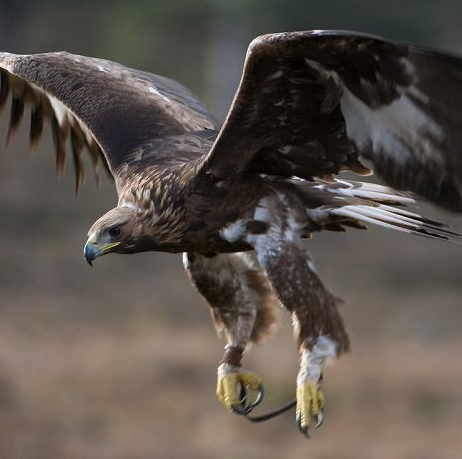The Barbarian said:
Barbarian observes:
Actually anatomically modern humans didn't evolve from H. neandertalis
Everyone familiar with the evidence. Neandertal DNA is too different from ours to be considered the same species. We are sibling species.
[quote:kl3u4zsx]However, according to the latest peer-reviewed research, H.s.n. and H.s.s. did interbreed.
Which is not surprising. Lions and tigers can also interbreed. But there isn't much Neandertal DNA in modern humans.
Some would say this is evidence for the two being the same species.
It would be difficult to say so. The evidence shows that anatomically modern humans and Neandertals lived in the same area for thousands of years in the Middle East, with no sign of interbreeding. It seems that we could have interbred, but for some reason, did not. Possibly, both populations were specialized and like lions and tigers rarely met, even if they lived in the same geographical area.
Barbarian observes:
We both evolved from archaic H. sapiens,
I assume you refer to H. heidelbergensis.
Or some other population of archaic humans, such as H. ergaster, or perhaps even directly from H. erectus. There are very small distinctions between these species.
We have not recovered H. heidelbergensis DNA yet. But IF H. heidelbergensis, H.s.n. and H.s.s. could interbreed then are we still dealing with a single species, with microevolutionary differences?
Are lions and tigers the same species? How about polar bears and brown bears?[/quote:kl3u4zsx]
Barbarian observes:
Actually anatomically modern humans didn't evolve from H. neandertalis
CR:
Barb:
Everyone familiar with the evidence.
No, I meant who made that claim? Who made the claim that H.s.s evolved from H.s.n?
Neandertal DNA is too different from ours to be considered the same species.
Not according to Paabo et al. with Max Plank:
“…The Neanderthals are so closely related to us that they fall into our [genetic] variationâ€, Professor Paabo said yesterday. In other words, it would be difficult to distinguish Neanderthal DNA from the DNA of a modern European, Asian or African…â€
http://www.thestar.co.za/?fSectionId=&f ... 725C951879
Barb:
It would be difficult to say so. The evidence shows that anatomically modern humans and Neandertals lived in the same area for thousands of years in the Middle East, with no sign of interbreeding.
CR:
"...Archaic humans such as Neanderthals may be gone but they're not forgotten — at least not in the human genome. A genetic analysis of nearly 2,000 people from around the world indicates that such extinct species interbred with the ancestors of modern humans twice, leaving their genes within the DNA of people today.
Using projected rates of genetic mutation and data from the fossil record, the researchers suggest that the interbreeding happened about 60,000 years ago in the eastern Mediterranean and, more recently, about 45,000 years ago in eastern Asia. Those two events happened after the first H. sapiens had migrated out of Africa, says Long. His group didn't find evidence of interbreeding in the genomes of the modern African people included in the study.
The researchers suggest that the population from the first interbreeding went on to migrate to Europe, Asia and North America. Then the second interbreeding with an archaic population in eastern Asia further altered the genetic makeup of people in Oceania..."
http://www.nature.com/news/2010/100420/ ... 0.194.html
"...'Neandertals are not totally extinct; they live on in some of us,' says Svante Pääbo of the Max Planck Institute for Evolutionary Anthropology in Leipzig, Germany, and leader of the Neandertal genome project.
He and other geneticists involved in the effort to compile the complete genetic instruction book of Neandertals didn’t expect to find that Neandertals had left a genetic legacy. Earlier analyses that looked at only a small part of the genome had contradicted the notion that humans and Neandertals intermixed (SN Online: 8/7/08)..."
“...'After all these years the geneticists are coming to the same conclusions that some of us in the field of archaeology and human paleontology have had for a long time,' says João Zilhão, an archaeologist and paleoanthropologist at the University of Bristol in England. 'What can I say? If the geneticists come to this same conclusion, that’s to be expected.'..."
"...Comparing the resulting blueprints of the female Neandertals, who lived about 40,000 years ago, with those of five present-day humans from China, France, Papua New Guinea and southern and western Africa, revealed that people outside of Africa carry Neandertal DNA..."
"...It is not clear how extensive interbreeding was; the data are consistent with either a short period with a great deal of interbreeding or with a long period of little interbreeding, says Richard E. (Ed) Green, a genome biologist now at the University of California Santa Cruz and a coauthor of the new study..."
"...Since humans and Neandertals could interbreed, some people question whether the two groups are different hominid species. The question doesn’t hold interest for John Hawks, an anthropologist at the University of Wisconsin–Madison. Genealogically, he says, the new study shows that many humans had a Neandertal great-great-great-great … grandfather. 'It’s impossible to talk about them as ‘them’ anymore,' he says. 'Neandertals are us'...â€
http://www.sciencenews.org/view/generic ... ith_humans
Comparisons of the Neandertal genome to the genomes of five present-day humans from different parts of the world identify a number of genomic regions that may have been affected by positive selection in ancestral modern humans, including genes involved in metabolism and in cognitive and skeletal development. We show that Neandertals shared more genetic variants with present-day humans in Eurasia than with present-day humans in sub-Saharan Africa, suggesting that gene flow from Neandertals into the ancestors of non-Africans occurred before the divergence of Eurasian groups from each other.
http://www.sciencemag.org/cgi/content/full/328/5979/710
A Draft Sequence of the Neandertal Genome
Green et al.
Science 7 May 2010:
Vol. 328. no. 5979, pp. 710 - 722
DOI: 10.1126/science.1188021





